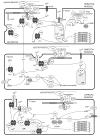Evaluation of the therapeutic utility of phosphodiesterase 5A inhibition in the mdx mouse model of duchenne muscular dystrophy
- PMID: 21695647
- PMCID: PMC4063120
- DOI: 10.1007/978-3-642-17969-3_14
Evaluation of the therapeutic utility of phosphodiesterase 5A inhibition in the mdx mouse model of duchenne muscular dystrophy
Abstract
Duchenne muscular dystrophy (DMD) is a devastating and ultimately fatal disease characterized by progressive muscle wasting and weakness. DMD is caused by the absence of a functional dystrophin protein, which in turn leads to reduced expression and mislocalization of dystrophin-associated proteins including neuronal nitric oxide (NO) synthase mu (nNOSμ). Disruption of nNOSμ signaling results in muscle fatigue and unopposed sympathetic vasoconstriction during exercise, thereby increasing contraction-induced damage in dystrophin-deficient muscles. The loss of normal nNOSμ signaling during exercise is central to the vascular dysfunction proposed over 40 years ago to be an important pathogenic mechanism in DMD. Recent preclinical studies focused on circumventing defective nNOSμ signaling in dystrophic skeletal and cardiac muscle by inhibiting phosphodiesterase 5A (PDE5A) have shown promising results. This review addresses nNOS signaling in normal and dystrophin-deficient muscles and the potential of PDE5A inhibition as a therapeutic approach for the treatment of cardiovascular deficits in DMD.
Figures


References
-
- Barouch LA, Harrison RW, Skaf MW, Rosas GO, Cappola TP, Kobeissi ZA, Hobai IA, Lemmon CA, Burnett AL, O’Rourke B, Rodriguez ER, Huang PL, Lima JA, Berkowitz DE, Hare JM. Nitric oxide regulates the heart by spatial confinement of nitric oxide synthase isoforms. Nature. 2002;416:337–339. - PubMed
Publication types
MeSH terms
Substances
Grants and funding
LinkOut - more resources
Full Text Sources
Other Literature Sources
Medical
Research Materials

